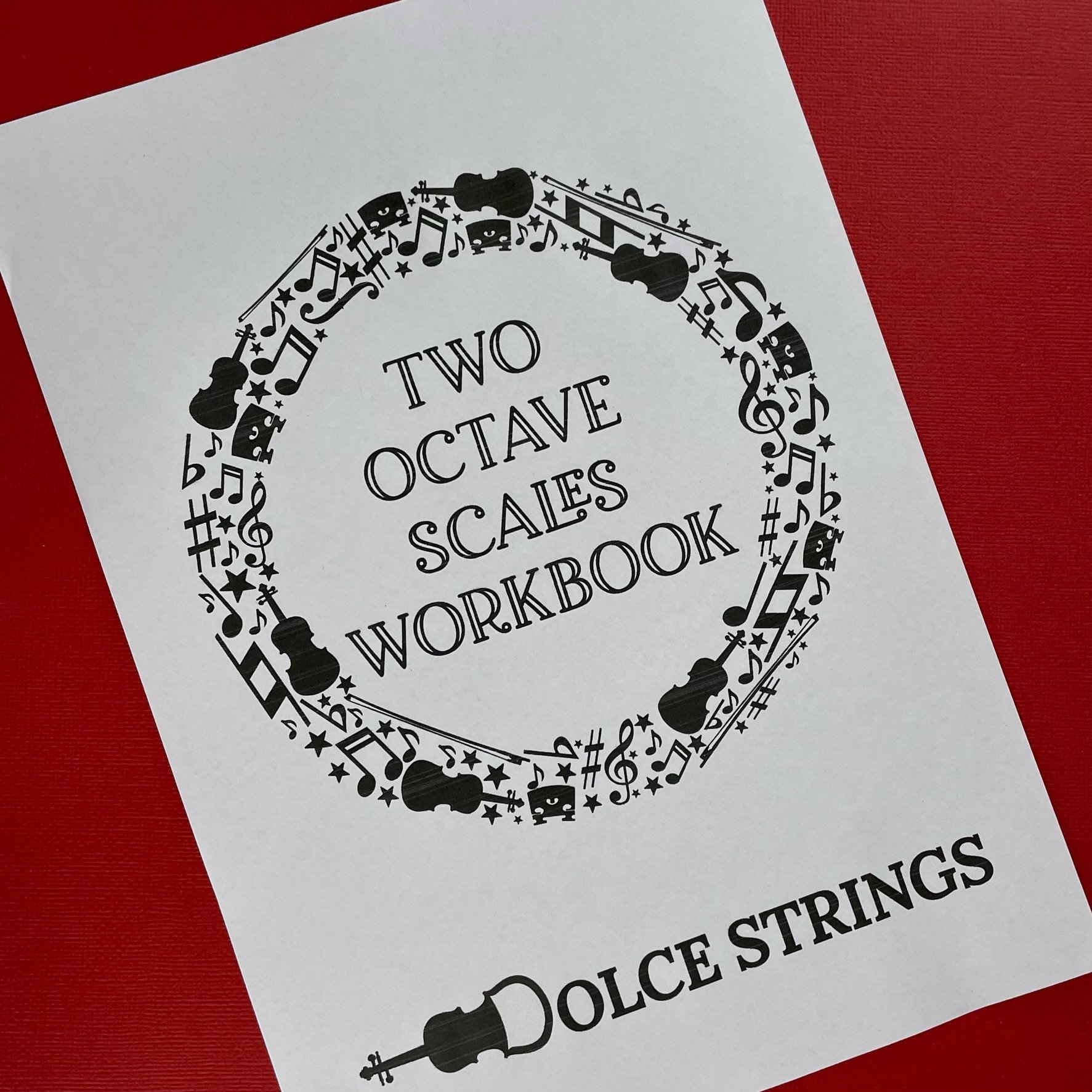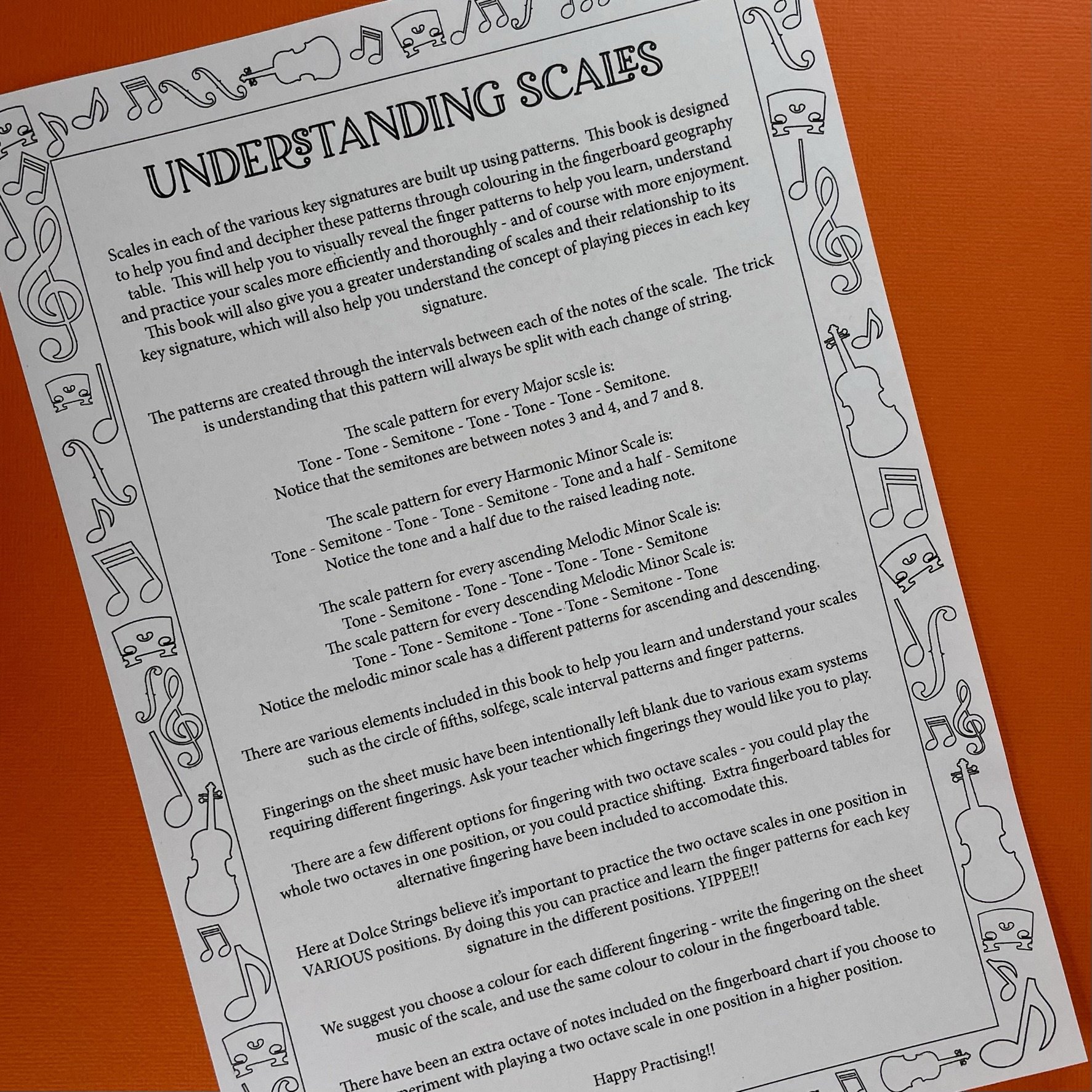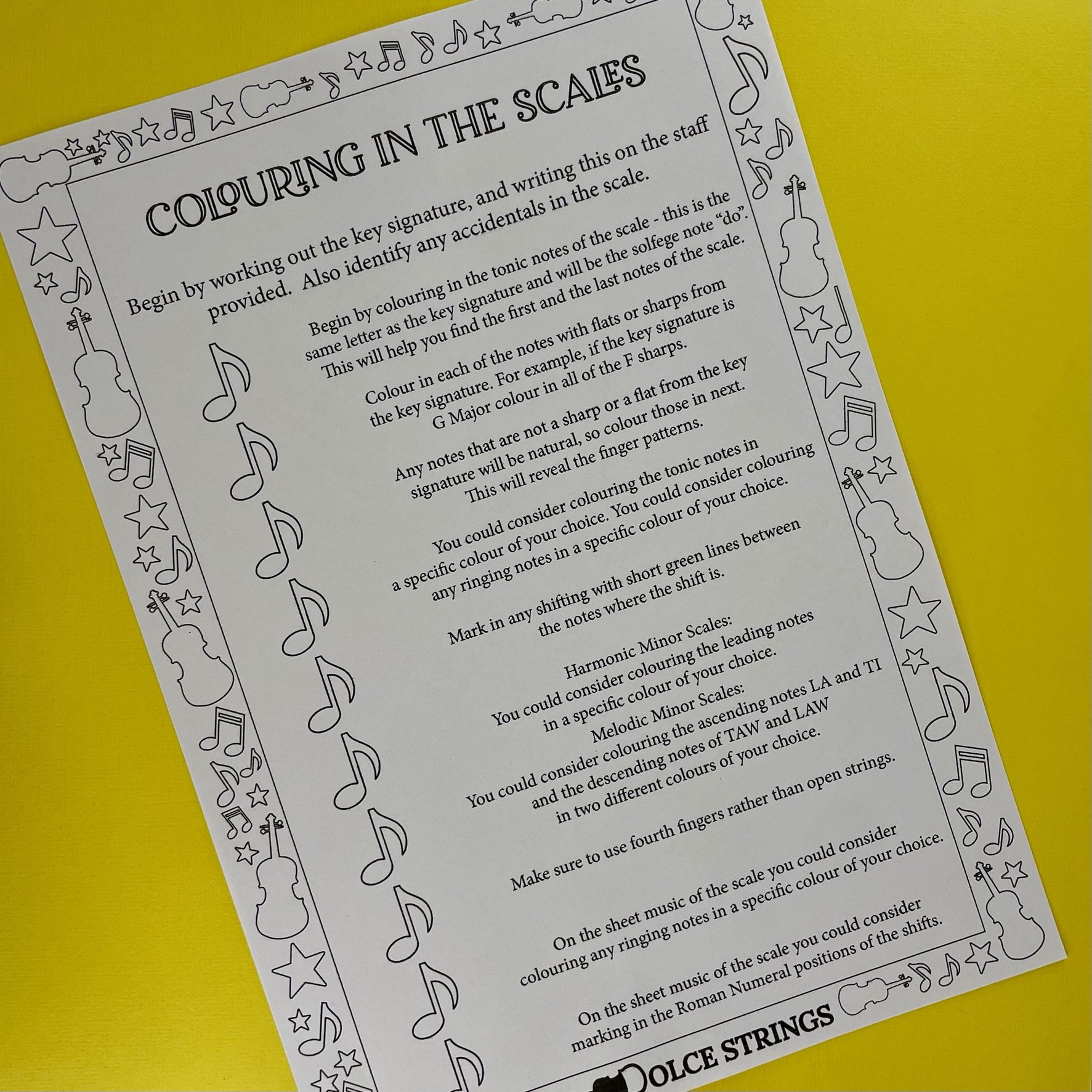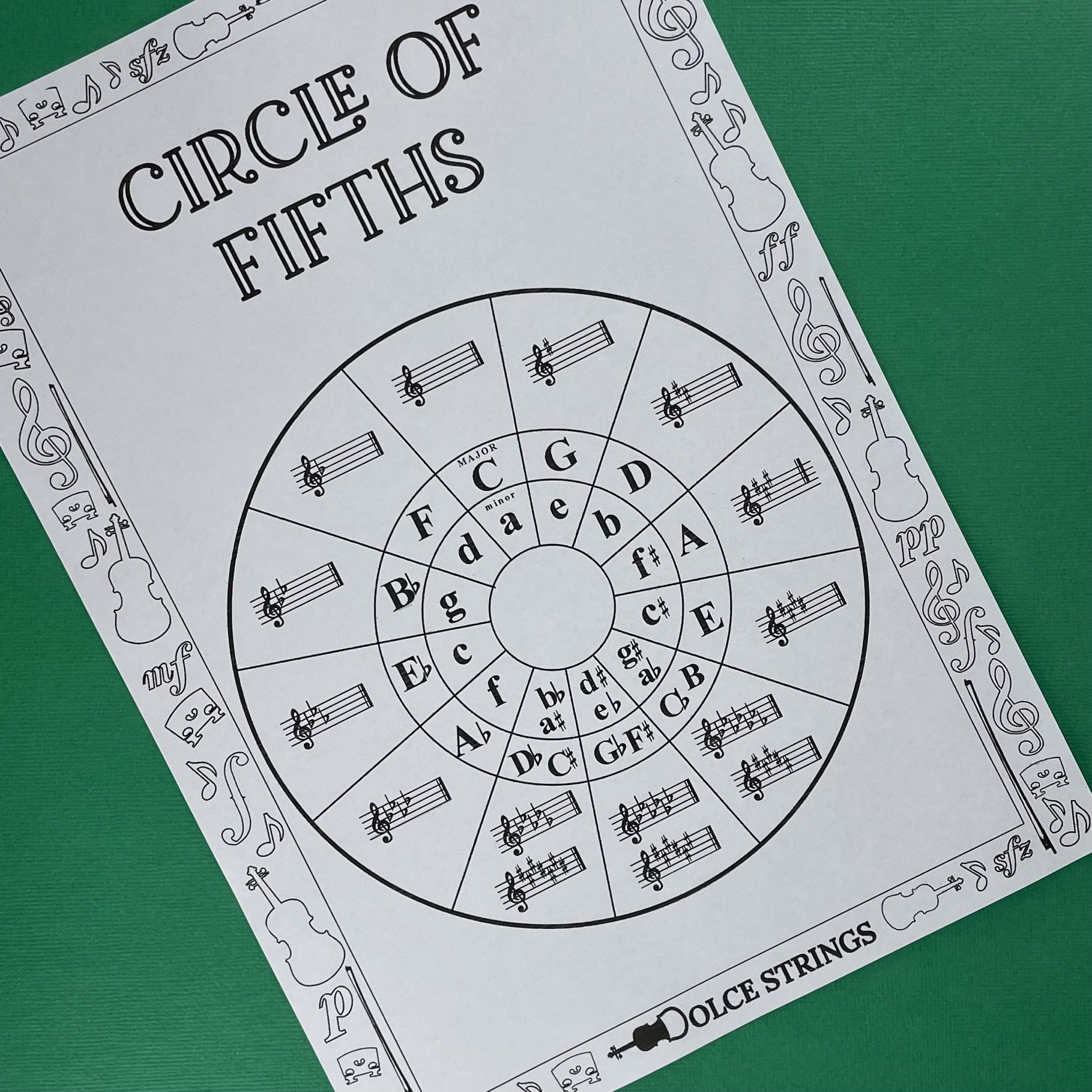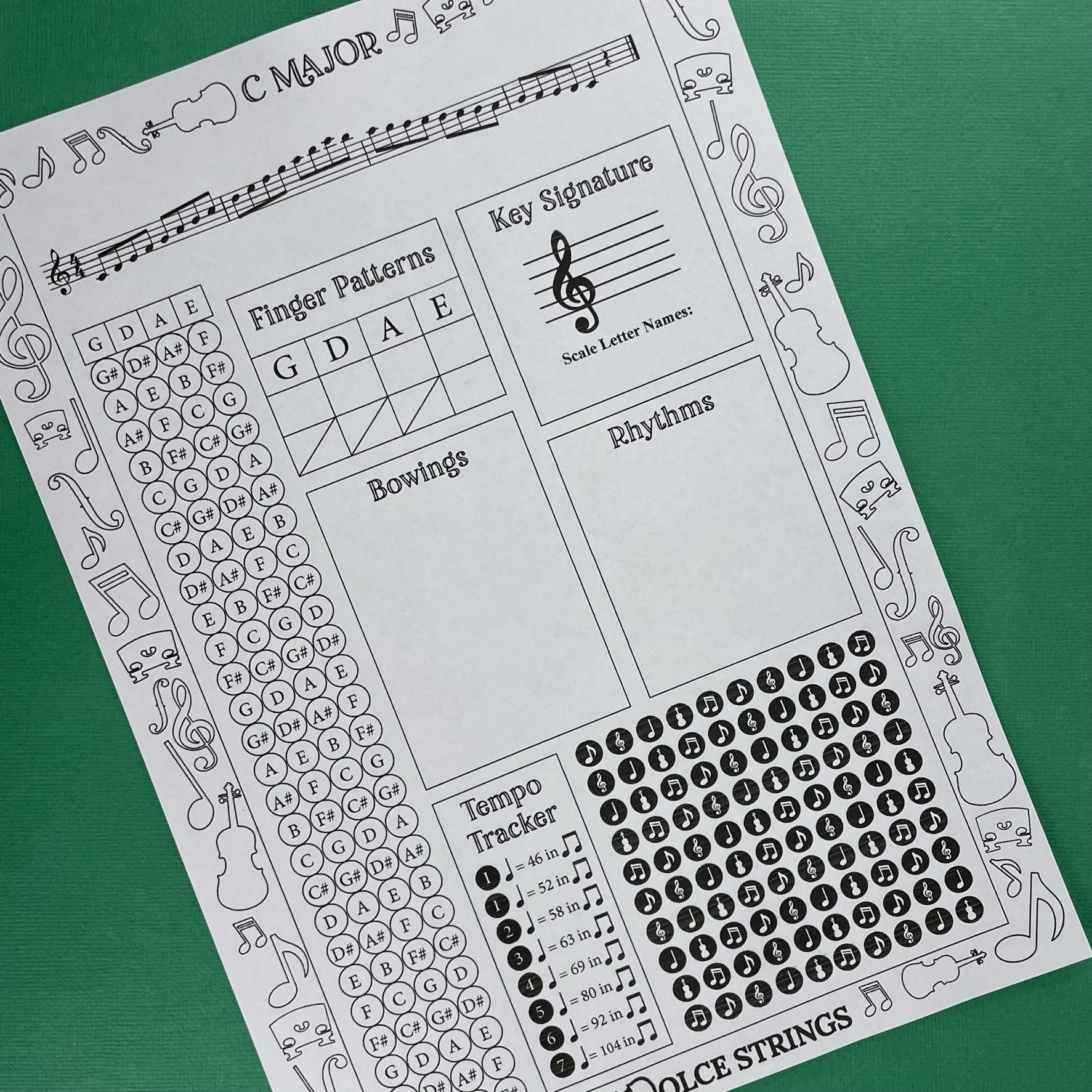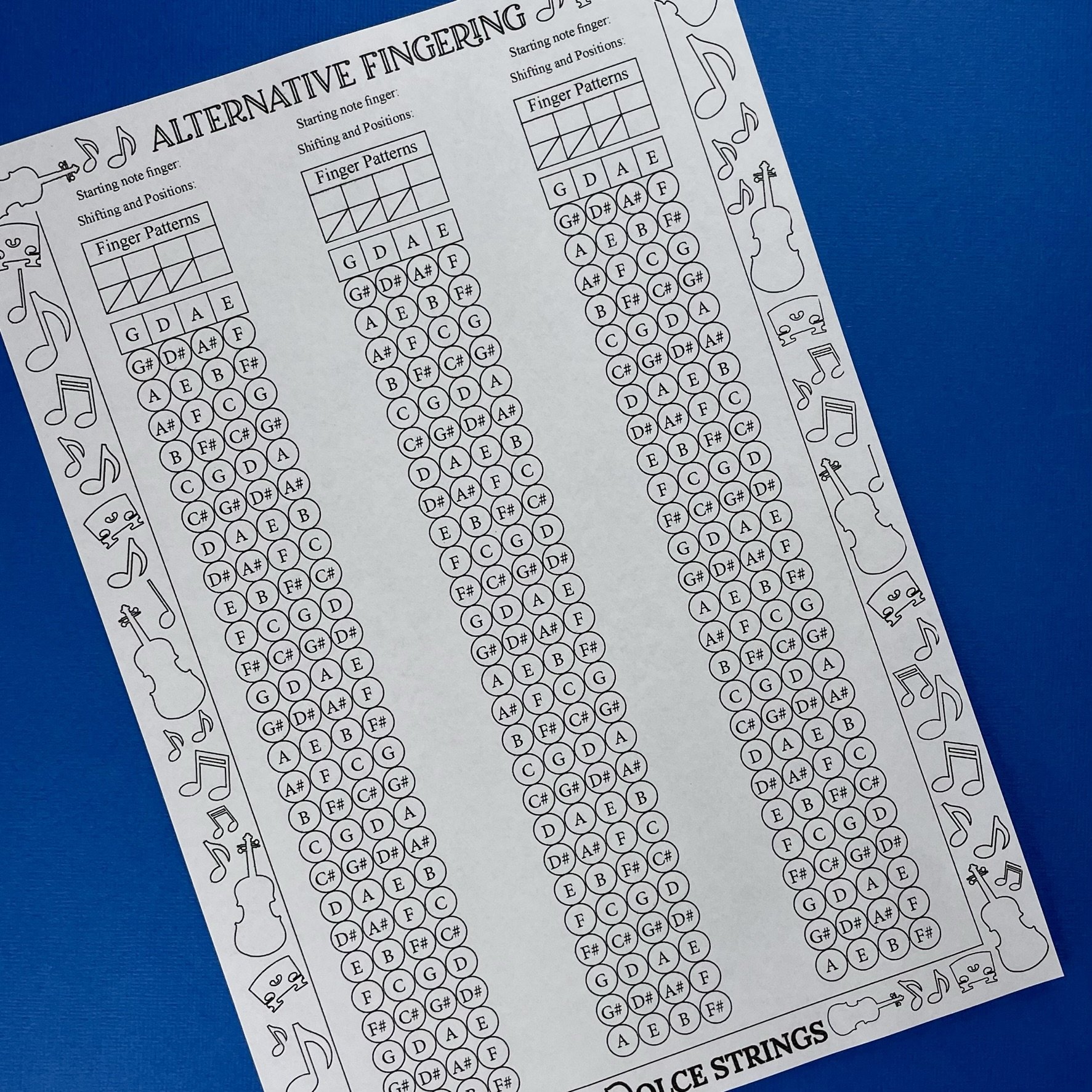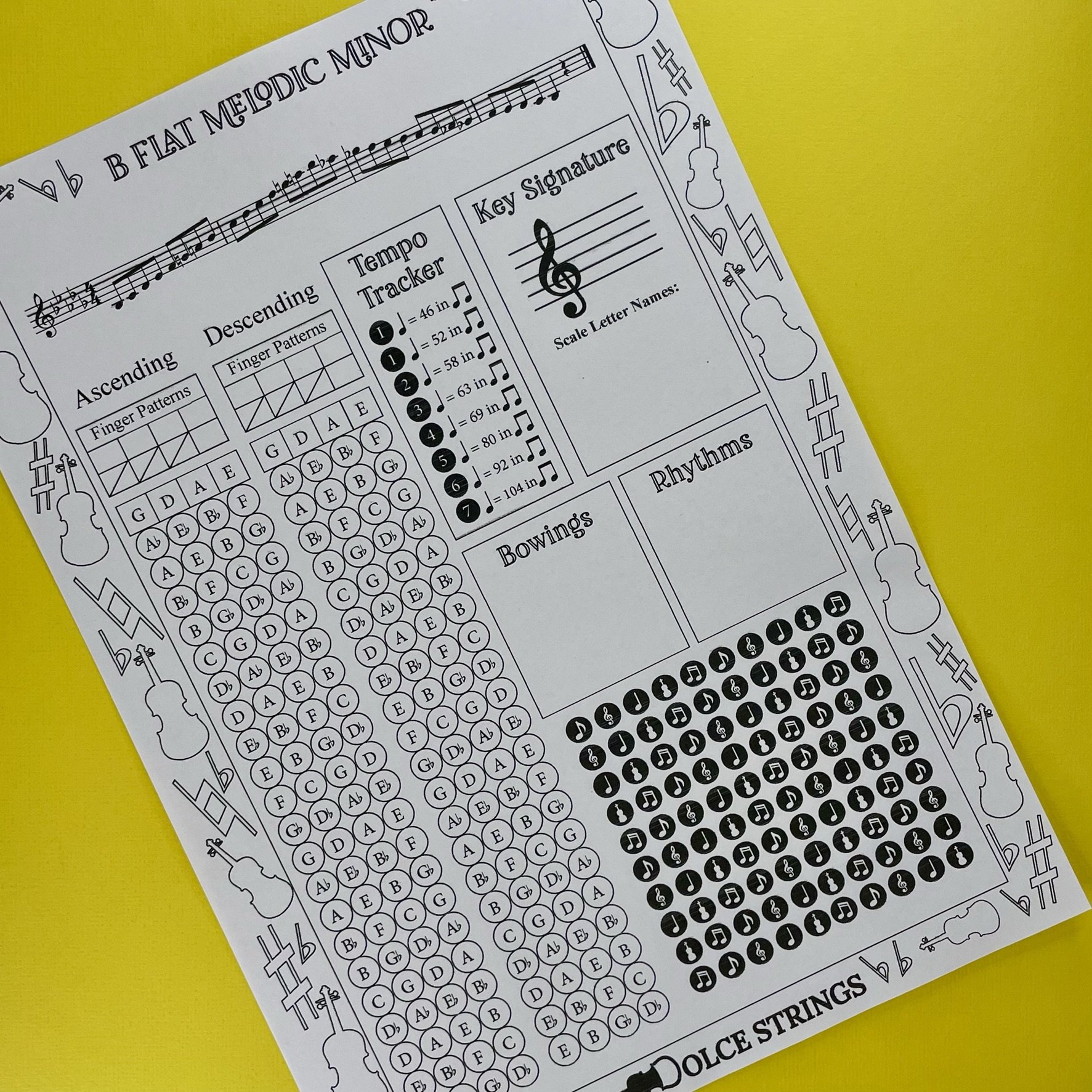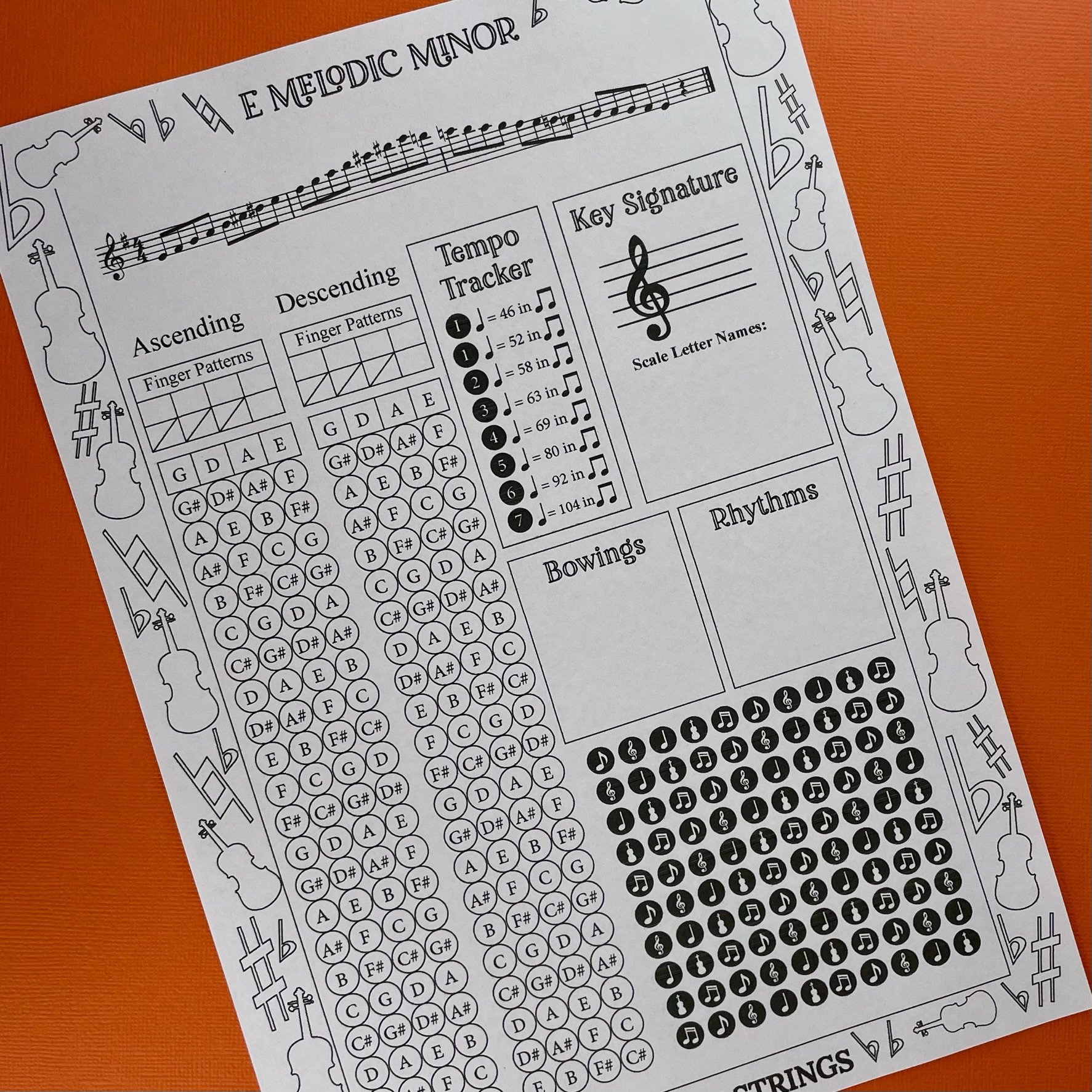Two Octave Scales Workbook
This is unlike any other scales book - this is a scales WORKBOOK! Students aren’t given the answer, but rather the tools to work out how to play their scales. Have you heard the expression “give a man a fish and you will feed him for a day. Teach a man to fish and you will feed him for a lifetime.” Well, here at Dolce Strings we have taken this approach with scales (although the only thing these two things have in common is that fish have scales hehe).
This scales workbook shares a solfège method I learned from my teacher (the well renowned violin teacher and pedagogy lecturer, Elizabeth Morgan AM). In this method the solfège letter name is changed when it is lowered. For example, the third note of a Major scale is MI. When the third note of a minor scale is lowered it becomes MAW. This method helps students understand the structure of each scale. Students are also taught the traditional approach of learning the patterns of the intervals for each major, harmonic minor and melodic minor.
Each scale has its own page in the book to work out the note letter names and the finger patterns. First, violin students work out the key signature of the scale with the help of the circle of fifths. Then violinists write down the letter names of the notes in the scale. With the guidance from their teacher, students colour the notes of the scale to reveal the finger patterns. There is also a tempo tracker related to ABRSM, however feel free to change this for any other exam system you may use. Each page also has 100 circles to colour in to track practice. Another feature is a place to write in various rhythms and bowings used to practice each scale.
I hope this workbook makes practising scales WAY more fun!!!!
This is unlike any other scales book - this is a scales WORKBOOK! Students aren’t given the answer, but rather the tools to work out how to play their scales. Have you heard the expression “give a man a fish and you will feed him for a day. Teach a man to fish and you will feed him for a lifetime.” Well, here at Dolce Strings we have taken this approach with scales (although the only thing these two things have in common is that fish have scales hehe).
This scales workbook shares a solfège method I learned from my teacher (the well renowned violin teacher and pedagogy lecturer, Elizabeth Morgan AM). In this method the solfège letter name is changed when it is lowered. For example, the third note of a Major scale is MI. When the third note of a minor scale is lowered it becomes MAW. This method helps students understand the structure of each scale. Students are also taught the traditional approach of learning the patterns of the intervals for each major, harmonic minor and melodic minor.
Each scale has its own page in the book to work out the note letter names and the finger patterns. First, violin students work out the key signature of the scale with the help of the circle of fifths. Then violinists write down the letter names of the notes in the scale. With the guidance from their teacher, students colour the notes of the scale to reveal the finger patterns. There is also a tempo tracker related to ABRSM, however feel free to change this for any other exam system you may use. Each page also has 100 circles to colour in to track practice. Another feature is a place to write in various rhythms and bowings used to practice each scale.
I hope this workbook makes practising scales WAY more fun!!!!
This is unlike any other scales book - this is a scales WORKBOOK! Students aren’t given the answer, but rather the tools to work out how to play their scales. Have you heard the expression “give a man a fish and you will feed him for a day. Teach a man to fish and you will feed him for a lifetime.” Well, here at Dolce Strings we have taken this approach with scales (although the only thing these two things have in common is that fish have scales hehe).
This scales workbook shares a solfège method I learned from my teacher (the well renowned violin teacher and pedagogy lecturer, Elizabeth Morgan AM). In this method the solfège letter name is changed when it is lowered. For example, the third note of a Major scale is MI. When the third note of a minor scale is lowered it becomes MAW. This method helps students understand the structure of each scale. Students are also taught the traditional approach of learning the patterns of the intervals for each major, harmonic minor and melodic minor.
Each scale has its own page in the book to work out the note letter names and the finger patterns. First, violin students work out the key signature of the scale with the help of the circle of fifths. Then violinists write down the letter names of the notes in the scale. With the guidance from their teacher, students colour the notes of the scale to reveal the finger patterns. There is also a tempo tracker related to ABRSM, however feel free to change this for any other exam system you may use. Each page also has 100 circles to colour in to track practice. Another feature is a place to write in various rhythms and bowings used to practice each scale.
I hope this workbook makes practising scales WAY more fun!!!!

